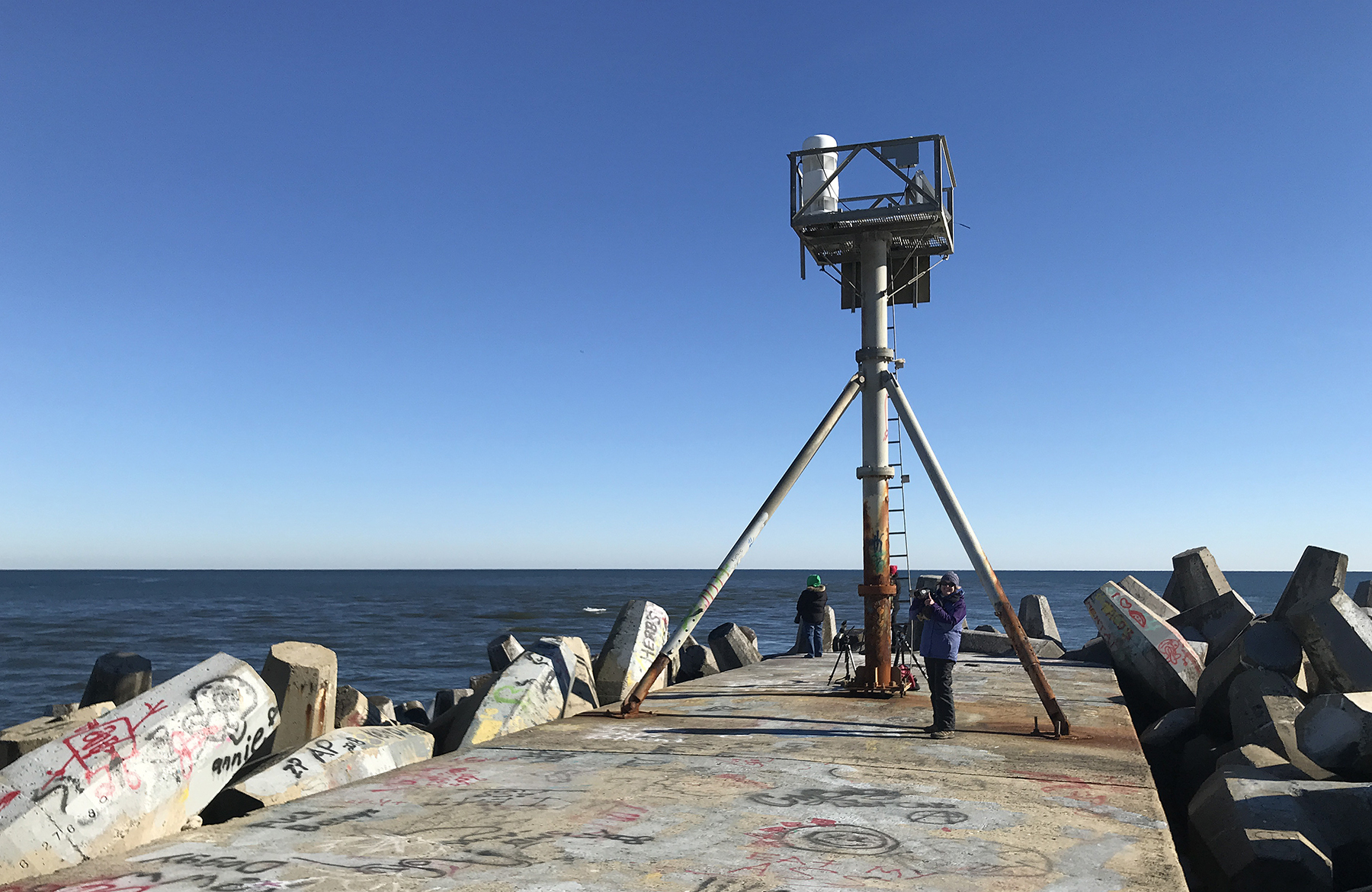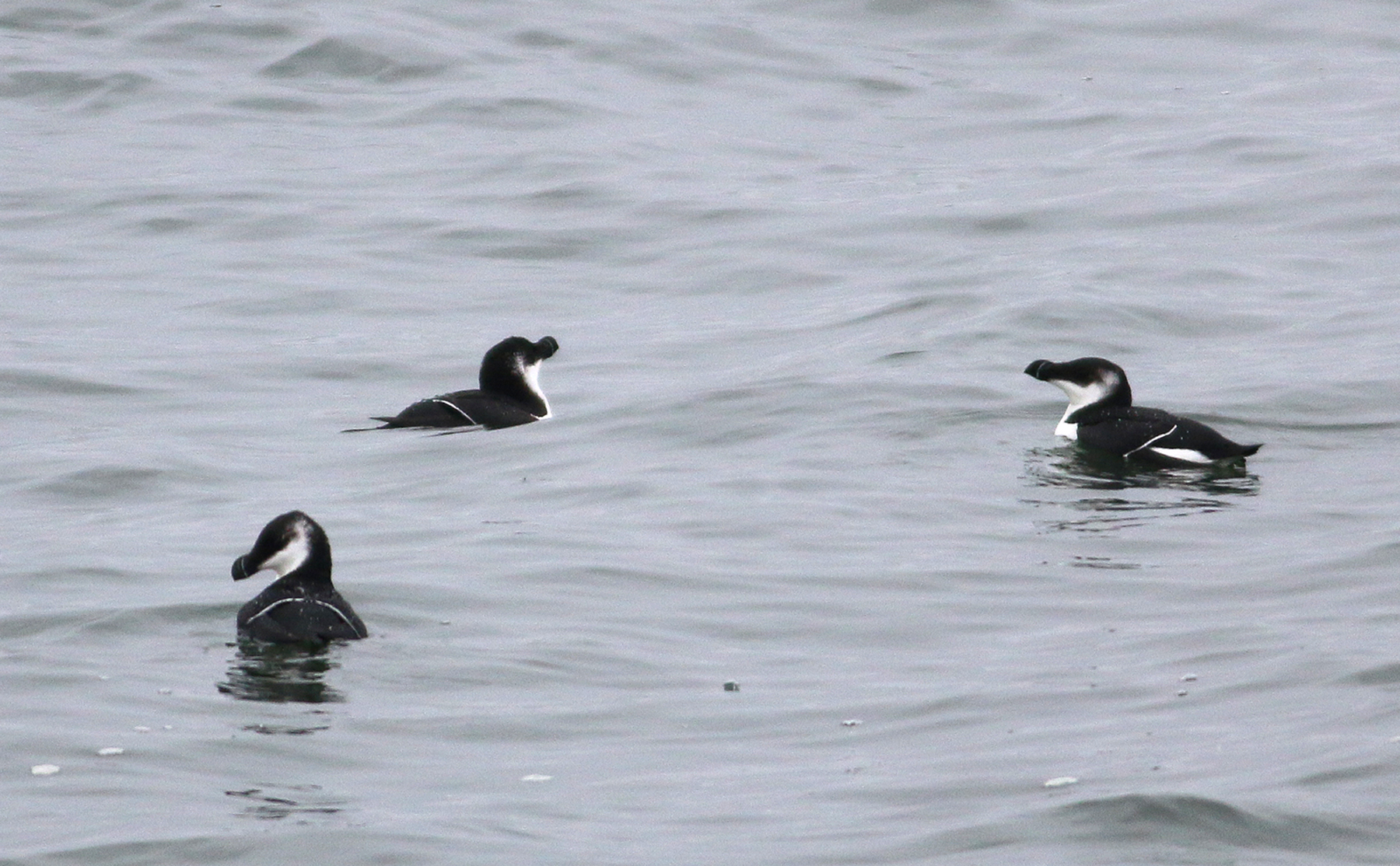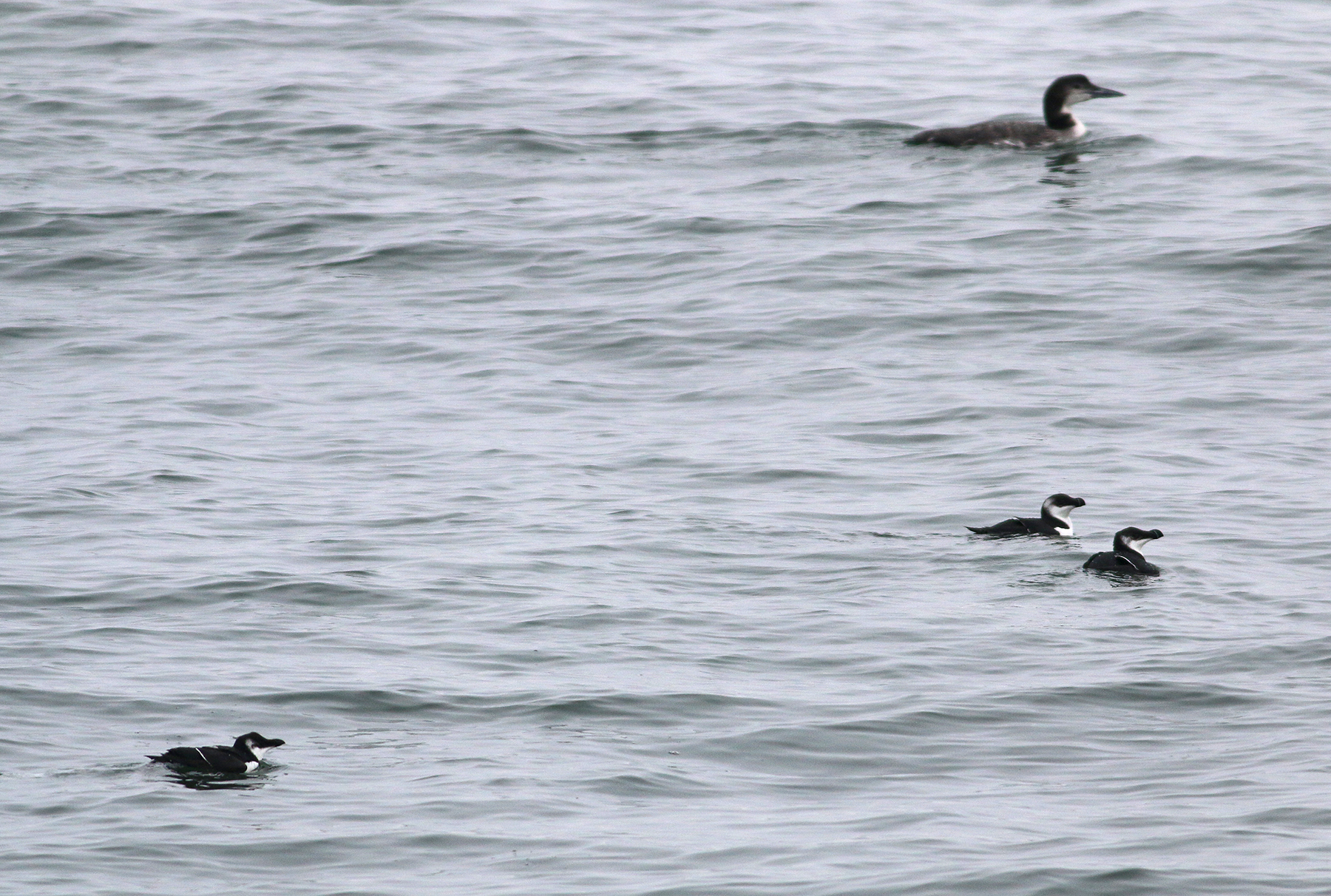In one of my recent posts I mentioned that it has been a wild winter for spotting Razorbills here in NJ. At the Avalon Seawatch near Cape May where they saw only three Razorbills the entire 2017 season and eleven the previous winter, thousands have been seen migrating by on individual days this year. Jeanine and I were fortunate to find one at Manasquan Inlet on January 1 (a very happy New Year’s present from the birding gods), and yesterday we returned back to Manasquan to see if we could spot any more, hopefully accompanied by some of its relative alcids (Dovekies, Murres, or Guillemots).

The end of Manasquan Jetty, south side. Unlike the longer (0.7 mi.), rougher, more risky boulder-strewn jetty at Barnegat Lighthouse, Manasquan Jetty (400 ft) is paved. And unfortunately, littered with graffiti now. The ease of access makes it very convenient.

It’s great when the Razorbills are so close that you can see the white vertical lines on their bill.
It was a perfect day for viewing. The seas were calm, with light westerly winds of 7 mph. It was completely overcast, but with a predicted high of 42 degrees. Perfect. We took our position at the end of the jetty and within the first hour or so spotted a single fairly close Razorbill and a group of two or three more distant ones too. (Question: is two birds officially a group? I digress with that petty technicality.) Then we spotted more further south, including a distant alcid that looked different enough that we decided to take the long walk on the sand to investigate further. When we arrived at that location, 0.5 mile to the south, we were ‘disappointed’ to find out that it was only another Razorbill. Accompanied by another.

It’s tough to see their eyes, because they are dark and superimposed on that dark black plumage, but we can see a well-lit eye here.
Instead of being satisfied with those results, being the ever-greedy birders we returned back to the jetty with renewed hope of finding different alcids, and were we ever glad that we did. Before we even reached the end of the jetty, Jeanine spotted two Razoriblls to our right, with nice bin views. Then we found one at the end of the north jetty. A photographer who was there with us, Chuck, called out more that were even closer. Before we knew it, we were seeing groups of two and three and four at a time, leaving us positively giddy with delight. It became hard to estimate exactly how many were present, because Razorbills have a habit of diving for long periods and then re-surfacing a long distance away or even mysteriously disappearing. But suffice it to say that today they were as close as I have ever seen them, feeding actively (but on what??) for perhaps an hour or so, during which time we nearly always had a Razorbill in sight. During one swing of the periphery we counted at least nine on the surface, more than were seen in an entire season at Avalon in 2017! Chuck was in photographer heaven, having been pursuing Razorbills unsuccessfully for six years, and now he was surrounded by them.

Eventually it became too commonplace to find individual Razorbills, so I started focusing on groups. Here’s an adult on the left, and an immature Razorbill with a less-pronounced bill on the right. I tried to turn it into a Thick-billed Murre, but was unsuccessful.

And here’s a group of three adult Razorbills on the surface together. I missed the photo of four Razorbills lined up perfectly.

Here’s another group of three Razorbills, with a Common Loon in the background providing a nice size comparison.
So if you haven’t seen your lifer Razorbill yet, or your 2019 Razorbill, give Manasquan Inlet a try. It is unclear why the Razorbills don’t appear all up and down the coast (we spent five hours at Holgate Beach this week without a single alcid), but for whatever reason, they like Manasquan. Which means I like it there too.
